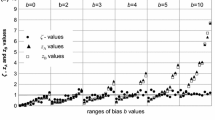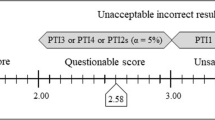Abstract
A statistical strategy for discouraging collusion in split-level proficiency testing schemes was developed. When the samples are randomly labeled, the difference in the analyte levels in the two samples can be designed to maximize the probability of detecting collusion when it occurs, so that participants who colluded cannot easily receive satisfactory assessments. This favors providing convictive assessments of participants’ proficiency and giving the participants a level playing field.
Similar content being viewed by others
References
ISO Guide 43–1:1997, Proficiency testing by interlaboratory comparisons – Part 1: Development and operation of proficiency testing schemes, International Organization for Standardization, Genève 1997
APLAC T030, Food Microbiological Proficiency Testing Program— Final Report, China National Accreditation Board for Laboratories, Beijing 2002
APLAC PT002–2003, Testing Interlaboratory comparisons, APLAC, 2003
Author information
Authors and Affiliations
Corresponding author
Rights and permissions
About this article
Cite this article
Wang, W., Zheng, J., Tholen, D.W. et al. A statistical strategy for discouraging collusion in split-level proficiency testing schemes. Accred Qual Assur 10, 140–143 (2005). https://doi.org/10.1007/s00769-005-0915-5
Received:
Accepted:
Published:
Issue Date:
DOI: https://doi.org/10.1007/s00769-005-0915-5




